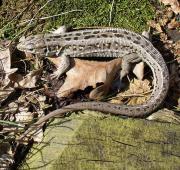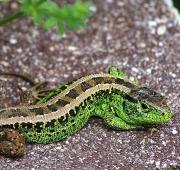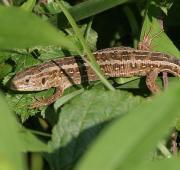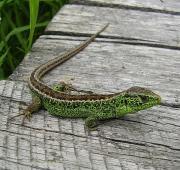 The sand lizard is a small species of lizard that is found across Europe and into parts of Asia. The sand lizard is one of only three species of lizard natively found in the UK along with the slow worm and the common lizard, and is protected in Britain (and much of Europe) as populations are low in most areas.
The sand lizard is a small species of lizard that is found across Europe and into parts of Asia. The sand lizard is one of only three species of lizard natively found in the UK along with the slow worm and the common lizard, and is protected in Britain (and much of Europe) as populations are low in most areas. The sand lizard is found inhabiting grass and heath-lands along with coastal dunes throughout it's native range which extends from the United Kingdom, east across Europe to Mongolia. Despite having a fairly wide distribution however, sand lizard populations are sparse and are completely extinct from certain areas of their native habitats.
The sand lizard is found inhabiting grass and heath-lands along with coastal dunes throughout it's native range which extends from the United Kingdom, east across Europe to Mongolia. Despite having a fairly wide distribution however, sand lizard populations are sparse and are completely extinct from certain areas of their native habitats.


Like many other lizard species, the sand lizard is a carnivorous animal meaning that it has to hunt and eat other animals in order to survive. Sands lizards primarily feast on a variety of invertebrates including insects, grasshoppers and spiders, which they watch closely using their excellent sight before powerfully grabbing hold of their meal with their strong tongue.
The small size of the sand lizard, coupled with it's sluggish nature when warming up during the day, makes these animals a prime target for hungry predators. Birds, dogs and cats are the most common predators of the sand lizard, along with habitat destruction or total loss caused by humans.
Sand lizards mate in the early summer when males begin to show off their new green patterns in order to attract and impress a female mate. Female sand lizards lay their eggs in the sand where they are incubated by the sun and not by the mother. As with other lizard species, very little care is provided by the parents for their young who are independent from a very early age.
Today, habitat loss has pushed these lizards into smaller and smaller areas and sand lizard populations across Europe are now under threat. The sand lizard is considered to be an animal at threat from extinction in the wild and is protected in much of it's natural range.

